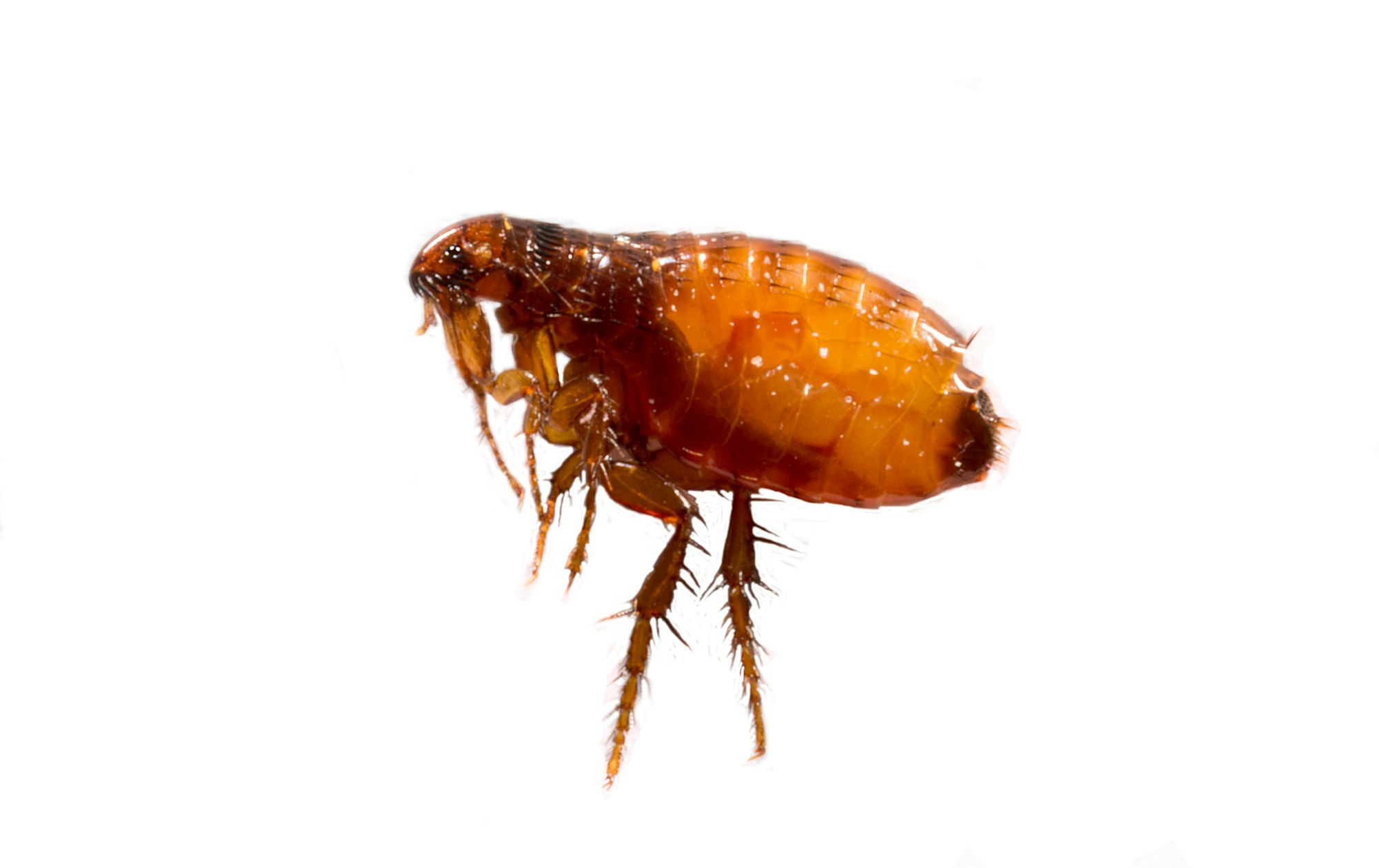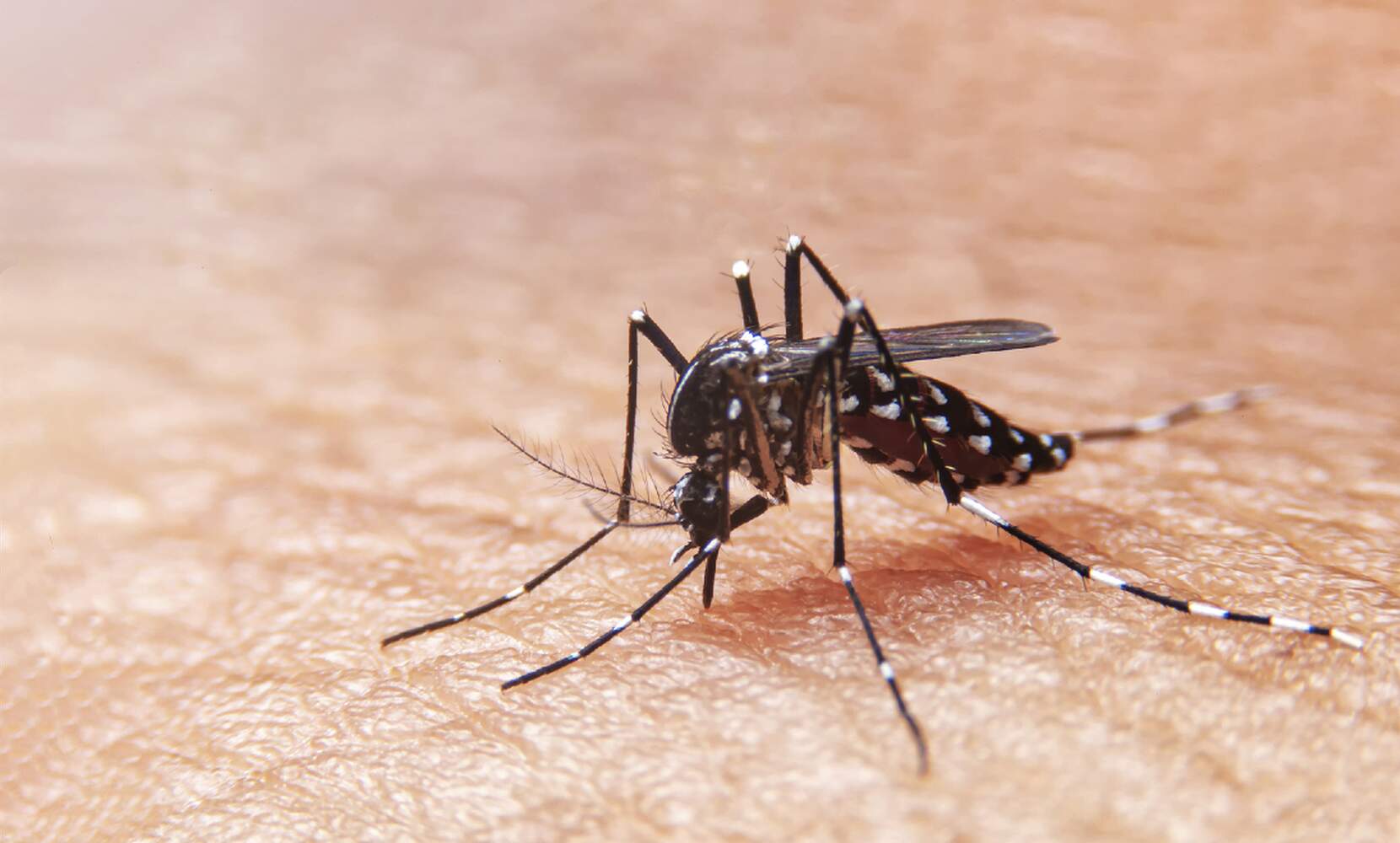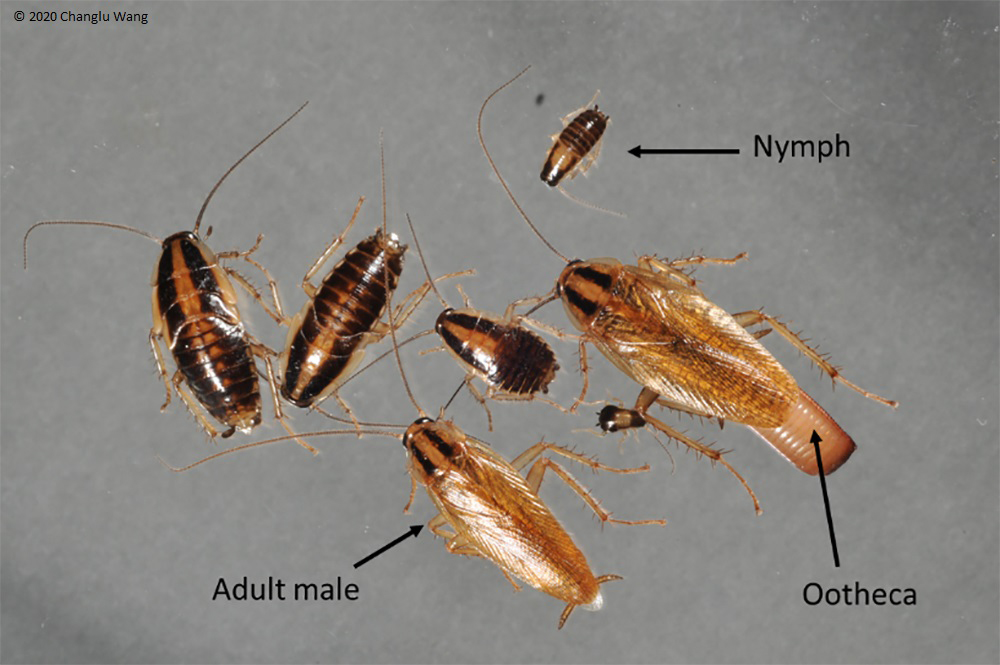Description: Adult fleas are about 1/8 inch long (1 to 3 mm) and are brownish-black, flattened in appearance, and wingless. They have backward-pointing bristles that help them navigate through the hairs or feathers of host animals, making them difficult to remove by grooming. Flea larvae are less than 1/4 inch long (6 mm), legless, and off-white in color. The most likely place to find larvae in an infested home is around where your pets sleep.
Lifecycle: Fleas pass through four stages in their lifecycle: egg, larva, pupa, and adult. Although adult fleas can jump, they usually do not travel long distances without a host. Fleas prefer to wait and jump onto a passing animal, remaining there until dislodged or groomed off. Without a host, adult fleas live only a few days to 2 weeks. On short-haired cats and dogs, fleas survive an average of 1-2 weeks; however they live up to 12 weeks on long-haired animals!
Current studies show that adult fleas account for only 5% of the total flea population. Eggs account for 50%, larvae account for about 35%, and the remaining 10% are the pupa cocoons.
The female flea begins laying eggs within 2 days of her first blood meal. Within a week, it produces an average of 27 eggs per day! Larvae begin to develop in 5 to 11 days. The pupa stage is the transition between larva and adult, forming inside a cocoon spun by the larva. After a week or two, the pupa becomes an adult. The adult flea may remain in the cocoon for up to 5 months, but when stimulated by vibration of a passing animal, the adult can emerge within seconds. This is why vacuuming is critical – we’ll cover that in a minute.
Habitat: Fleas do not survive well outdoors in hot, sunny lawns. Relative humidity less than 50% or soil temperature higher than 95*F kills flea larvae. Moist, shaded spots near pet resting areas are the places to find fleas. Indoors, flea larvae are usually found under furniture and around pet bedding.
Risk and Prevention: Fleas bites can cause both irritation and disease. Dogs and cats scratch constantly when heavily infested, resulting in spreading flea eggs around areas where they are laying. The most serious effects occur when a pet develops an allergy to flea bites. As few as one or two bites can cause severe itching and scratching in allergic pets.
Fleas do not normally live on humans but do bite people who handle infested animals or if the animals are removed from the home, since the fleas will look for the next best meal. Flea bites cause small, red, itchy bumps, usually on the ankles and lower legs. Pest Control Tech’s are great at identifying and treating bugs but we’re not dermatologists and cannot diagnose a pest issue by only seeing bite marks.
Fleas that have bitten and fed on rodents may transmit diseases, including plague and murine typhus. To prevent flea infestations, wash pet bedding regularly and vacuum thoroughly. Vacuuming removes up to 30 percent of the larvae and up to 60 percent of flea eggs from a carpet, as well as the larvae’s food supply of dried blood. Vacuum under furniture, cushions, chairs, beds, and along walls, and discard vacuum cleaner bags at least once a week. Fleas can continue to develop inside vacuum cleaner bags and re-infest the house. Vacuuming helps vibrate the papua, tricking the fleas to come out (and be vacuumed up).
Treatment: Treating a flea infestation involves a combination of cleaning and using appropriate products. Regularly wash pet bedding in hot water and vacuum thoroughly to remove eggs, larvae, and adult fleas. Use flea control products such as sprays, powders, or streamers as directed for your home. Additionally, treat your pets with veterinarian-recommended flea control products to eliminate fleas on them and prevent future infestations.
Need professional help? Give BBK Pest Control a call and let us get the issue under control.




